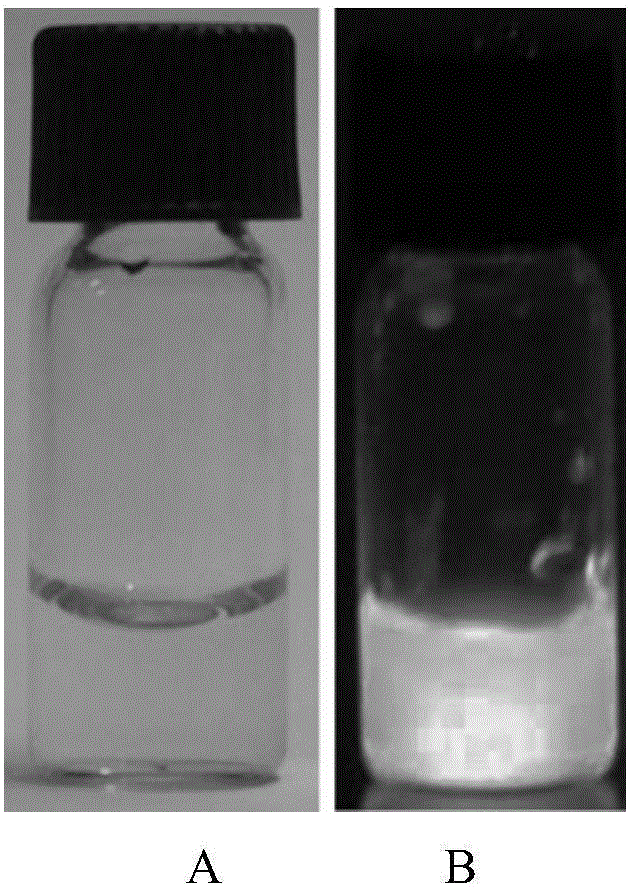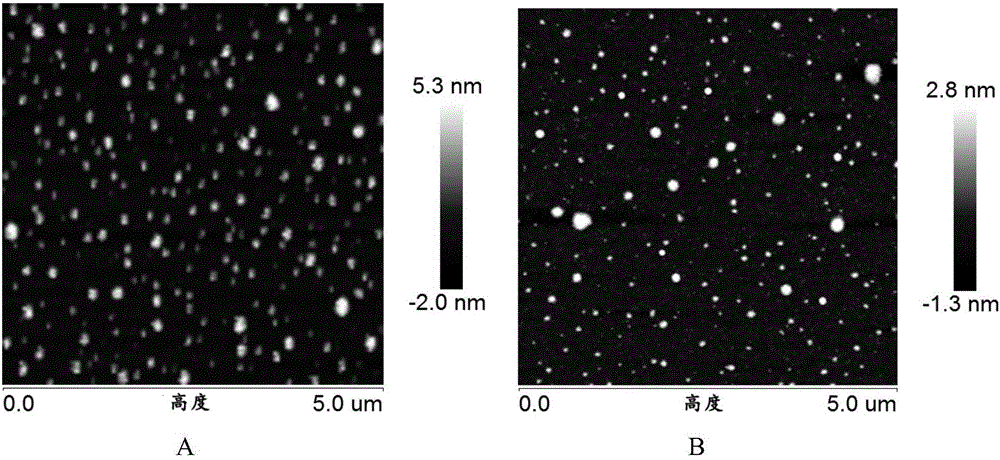Graphene quantum dot and ionic liquid compound and application thereof to Cr(VI) detection
A technology of graphene quantum dots and ionic liquids, applied in measuring devices, instruments, fluorescence/phosphorescence, etc., to achieve the effects of stable fluorescence performance, rapid detection, and obvious selective recognition capabilities
- Summary
- Abstract
- Description
- Claims
- Application Information
AI Technical Summary
Problems solved by technology
Method used
Image
Examples
Embodiment 1
[0064] 1. Preparation of graphene quantum dots-ionic liquid composites
[0065] (1) Hydrothermal synthesis of graphene quantum dots: using 1,3,6-trinitropyrene as the carbon source and sodium hydroxide solution as the medium, the graphene quantum dots rich in hydroxyl groups (OH- GQDs), the obtained graphene quantum dots are purified by suction filtration and dialysis, and finally obtained brown graphene quantum dot solids through freeze-drying.
[0066] Among them, the concentration of 1,3,6-trinitropyrene is 5 mg / mL, the concentration of sodium hydroxide is 5 mg / mL, and the hydrothermal reaction is carried out in a polytetrafluoroethylene autoclave at 200 °C for 4 hours, and the volume of the reaction solution accounts for 30% of still volume, adopt the microporous filter membrane suction filtration of 0.45um, remove unreacted impurity; Product dialysis purification method is; Reaction product is fully dialyzed to remove unreacted small molecule pyrene through the dialysis b...
Embodiment 2
[0083] Testing of actual samples
[0084] Take Jinsha Lake water as an actual sample, add the filtered Jinsha Lake aqueous solution to the concentration of 0.2 mg / mL BMMIBr-GQDs solution prepared in Example 1 at a volume ratio of 1:15, and react in the dark for 12 minutes. Placed in a fluorescence spectrometer, at an excitation wavelength of 470nm, read the fluorescence intensity value at an emission wavelength of 512nm, calculate the percentage reduction of the fluorescence intensity, and then bring it into the standard curve established in Example 1, and calculate the Cr in the actual sample according to the standard curve. (VI) content.
[0085] Calculated: the concentration of Cr(VI) in Jinsha Lake water is 56.8μM. The detection result is close to the determination result (58.3μM) by atomic absorption spectrometry. It shows that the detection method of the present invention can accurately react the Cr(VI) content of the actual sample.
PUM
| Property | Measurement | Unit |
|---|---|---|
| size | aaaaa | aaaaa |
| molecular weight | aaaaa | aaaaa |
| size | aaaaa | aaaaa |
Abstract
Description
Claims
Application Information
 Login to View More
Login to View More - R&D
- Intellectual Property
- Life Sciences
- Materials
- Tech Scout
- Unparalleled Data Quality
- Higher Quality Content
- 60% Fewer Hallucinations
Browse by: Latest US Patents, China's latest patents, Technical Efficacy Thesaurus, Application Domain, Technology Topic, Popular Technical Reports.
© 2025 PatSnap. All rights reserved.Legal|Privacy policy|Modern Slavery Act Transparency Statement|Sitemap|About US| Contact US: help@patsnap.com



